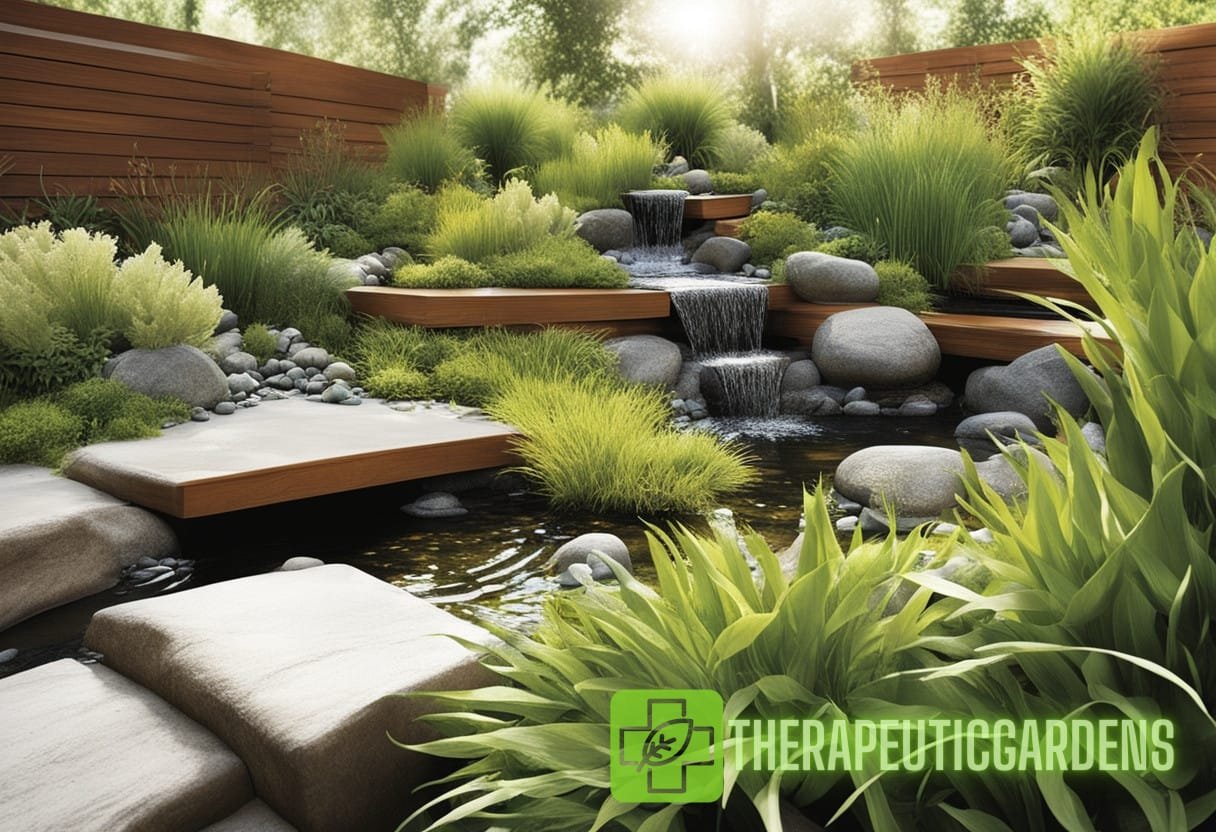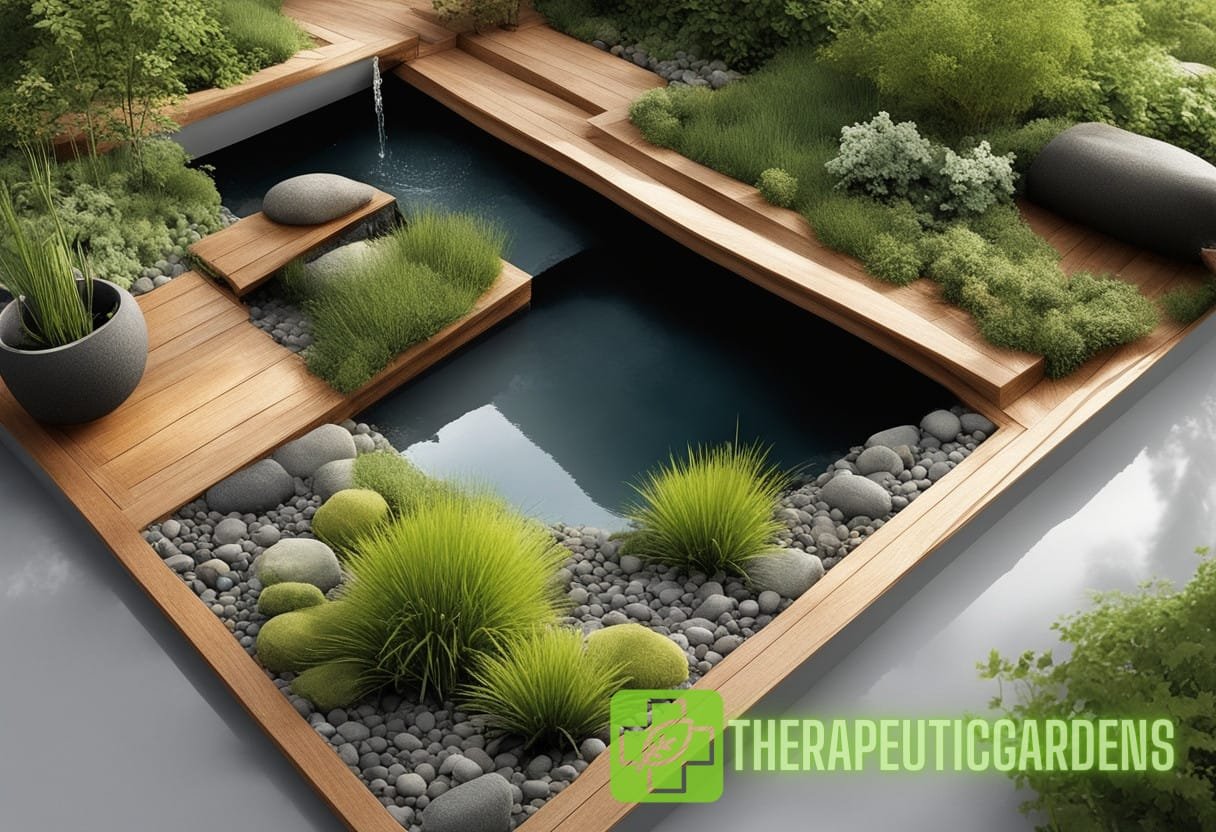Introduction to Biologically-Inspired Water Features
Integrating water features into residential gardens is becoming increasingly popular as homeowners seek to create more sustainable and aesthetically pleasing outdoor environments. Biologically-inspired water features, in particular, offer an innovative approach that not only enhances the visual appeal of a garden but also promotes biodiversity and environmental health.
This guide will explore various aspects of incorporating biologically-inspired water features into sustainable residential ecosystems. We’ll cover the benefits, design principles, innovative technologies, and practical implementation methods.
Benefits of Biologically-Inspired Water Features
Enhanced Aesthetic Appeal
Water features such as ponds, streams, and waterfalls add a dynamic and calming visual element to any garden. The movement and sound of water create a serene atmosphere, making outdoor spaces more inviting and enjoyable.
Support for Local Wildlife
Water features provide vital habitats for various species, including birds, amphibians, insects, and plants. This biodiversity helps create a balanced ecosystem, contributing to the overall health of the environment.
Improved Air Quality
Water bodies release moisture into the air, which can help to reduce dust and pollutants. This contributes to better air quality, particularly in urban environments.
Climate Regulation
Water features can help moderate local temperatures by absorbing heat during the day and releasing it at night. This natural cooling effect is particularly beneficial during hot summer months.
Design Principles for Biologically-Inspired Water Features
Mimicking Natural Ecosystems
One of the fundamental principles of biologically-inspired water features is to mimic natural ecosystems. This involves creating water features that blend seamlessly with the surrounding landscape and support native flora and fauna.
Using Native Plants
Incorporating native plants around water features is crucial as they are well-adapted to the local climate and soil conditions. Native plants also provide essential food and habitat for local wildlife.

Minimizing Resource Use
Biologically-inspired water features should be designed to minimize the use of resources such as water and energy. This can be achieved through sustainable practices such as rainwater harvesting, solar pumps, and natural filtration systems.
Emphasizing Natural Materials
Using natural materials such as rocks, stones, and gravel enhances the authenticity of the water feature and ensures it harmonizes with the surrounding environment.
Innovative Technologies for Sustainable Water Features
Rainwater Harvesting Systems
Rainwater harvesting systems collect and store rainwater for use in water features. This sustainable practice reduces the demand on municipal water supplies and helps mitigate the effects of drought.
Solar-Powered Pumps
Utilizing solar-powered pumps is an eco-friendly way to maintain water circulation in ponds and streams. Solar pumps are efficient, cost-effective, and reduce reliance on non-renewable energy sources.
Natural Filtration Systems
Natural filtration systems, such as constructed wetlands and biofilters, use plants and microorganisms to clean and purify water. These systems are effective in removing contaminants and maintaining water quality.
Aeration Techniques
Aeration techniques, such as water fountains and air pumps, introduce oxygen into the water, which is essential for the health of aquatic organisms. Proper aeration also helps prevent the buildup of algae and other harmful substances.
Practical Implementation of Water Features
Creating a Plan
Before installing a water feature, it’s important to create a comprehensive plan. This includes selecting the location, design, materials, and technologies to be used. Consulting with a professional landscape designer can ensure the successful execution of the project.
Selecting the Right Location
Choosing the right location for a water feature is crucial for its functionality and visual impact. Consider factors such as sunlight, soil conditions, and proximity to other landscape elements.

Construction and Installation
The construction and installation process involves excavating the site, installing the necessary infrastructure, and adding features such as rocks, plants, and decorative elements. Ensuring proper water flow and drainage is essential to avoid issues such as flooding and erosion.
Maintenance and Care
Regular maintenance is necessary to keep water features in good condition. This includes cleaning, checking for leaks, and ensuring that pumps and filters are functioning properly. Seasonal care, such as winterizing, is also important to prevent damage during colder months.
Advanced Techniques for Sustainability
For advanced sustainability, consider integrating systems that harmonize various elements of your garden. One useful resource might be reading about how different sustainable flora are integrated into garden designs, like in this article on sustainable flora integration.
Case Studies of Successful Biologically-Inspired Water Features
Residential Pond Project
One successful case study involved a suburban home that incorporated a naturally-designed pond. The use of native plants and a solar-powered pump created a low-maintenance feature that enhanced the property’s aesthetic and ecological value.
Urban Stream Installation
An urban residential property implemented a meandering stream that ran through the garden. Utilizing rainwater harvesting and a natural filtration system, the stream supported local wildlife and improved the overall microclimate.
Rooftop Water Garden
In a densely populated urban area, a rooftop water garden was installed to utilize space effectively and create a green oasis. The garden featured a combination of aquatic plants and solar-powered water features, contributing to energy conservation and urban biodiversity.
Combining Water Features with Other Sustainable Practices
Consider linking your water features with other eco-friendly practices such as those discussed in this guide on water harmony, which discusses integrating various sustainable water management systems.
Conclusion
Integrating biologically-inspired water features into residential gardens is a forward-thinking approach that enhances both aesthetic and environmental value. By mimicking natural ecosystems, utilizing sustainable technologies, and incorporating native plants, homeowners can create stunning, eco-friendly outdoor spaces that support local wildlife and improve overall ecological health.
Through careful planning, thoughtful design, and regular maintenance, biologically-inspired water features can become a cornerstone of sustainable residential ecosystems, offering long-term benefits for both people and the planet.


